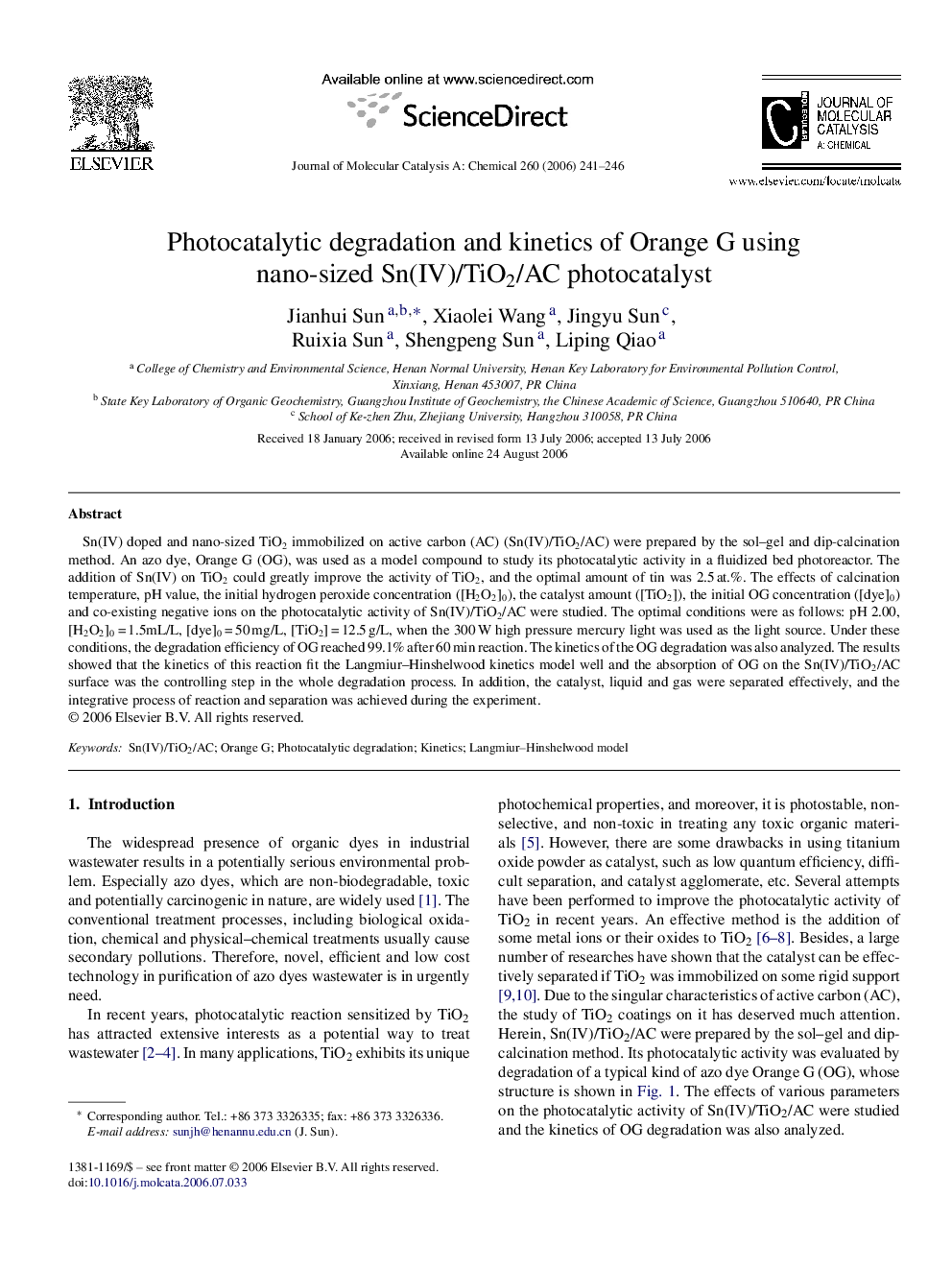| Article ID | Journal | Published Year | Pages | File Type |
|---|---|---|---|---|
| 68357 | Journal of Molecular Catalysis A: Chemical | 2006 | 6 Pages |
Sn(IV) doped and nano-sized TiO2 immobilized on active carbon (AC) (Sn(IV)/TiO2/AC) were prepared by the sol–gel and dip-calcination method. An azo dye, Orange G (OG), was used as a model compound to study its photocatalytic activity in a fluidized bed photoreactor. The addition of Sn(IV) on TiO2 could greatly improve the activity of TiO2, and the optimal amount of tin was 2.5 at.%. The effects of calcination temperature, pH value, the initial hydrogen peroxide concentration ([H2O2]0), the catalyst amount ([TiO2]), the initial OG concentration ([dye]0) and co-existing negative ions on the photocatalytic activity of Sn(IV)/TiO2/AC were studied. The optimal conditions were as follows: pH 2.00, [H2O2]0 = 1.5mL/L, [dye]0 = 50 mg/L, [TiO2] = 12.5 g/L, when the 300 W high pressure mercury light was used as the light source. Under these conditions, the degradation efficiency of OG reached 99.1% after 60 min reaction. The kinetics of the OG degradation was also analyzed. The results showed that the kinetics of this reaction fit the Langmiur–Hinshelwood kinetics model well and the absorption of OG on the Sn(IV)/TiO2/AC surface was the controlling step in the whole degradation process. In addition, the catalyst, liquid and gas were separated effectively, and the integrative process of reaction and separation was achieved during the experiment.
Graphical abstractThe Sn(IV)/TiO2/AC was prepared by the dip-coating technique with TiO2 sol–gel. In order to find the optimal calcination temperature for Sn(IV)/TiO2/AC preparation, the photocatalysts calcinated at different temperatures in the range of 450–600 °C were used to degrade OG. The photocatalytic activity of Sn(IV)/TiO2/AC was significantly influenced by the calcination temperature and the optimal calcination temperature was 550 °C. Figure optionsDownload full-size imageDownload as PowerPoint slide
